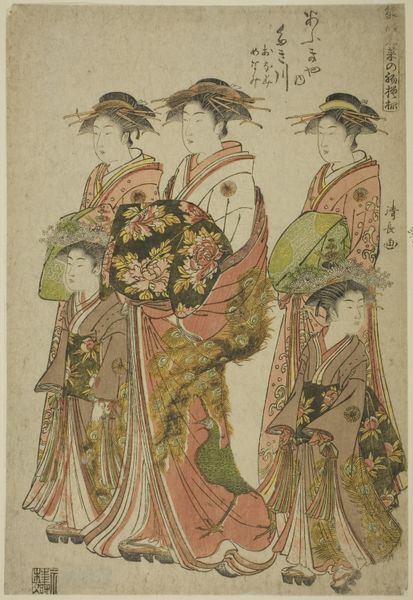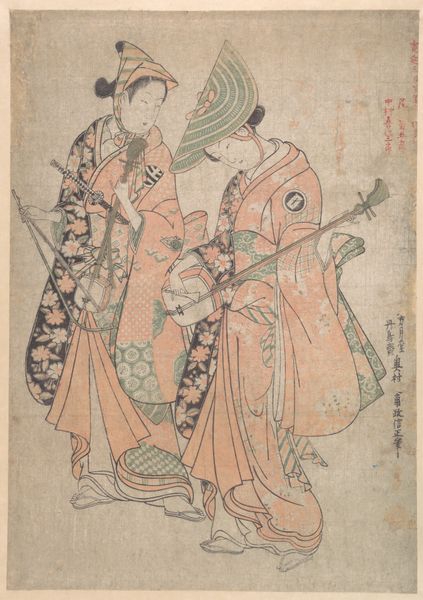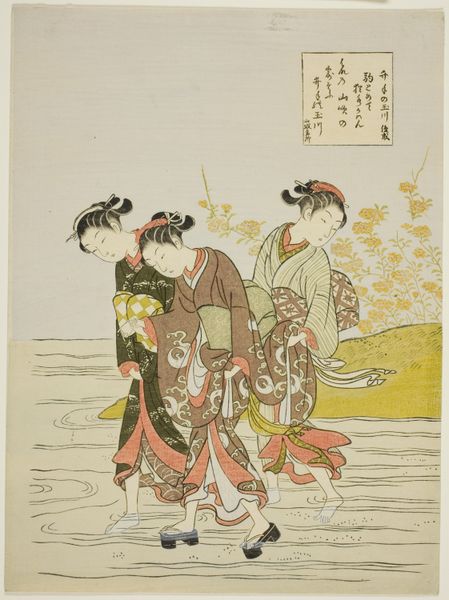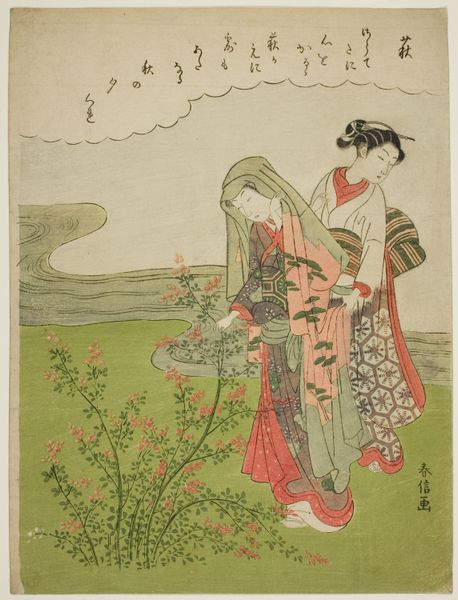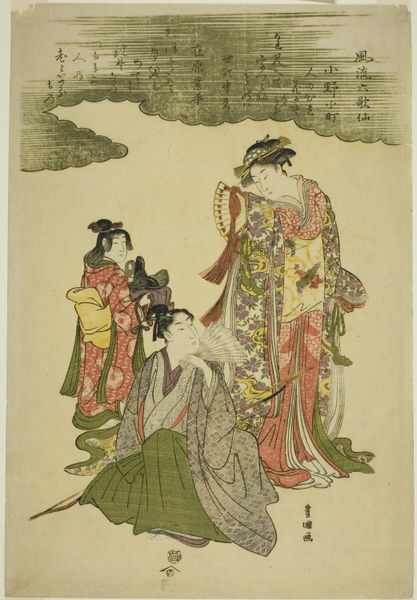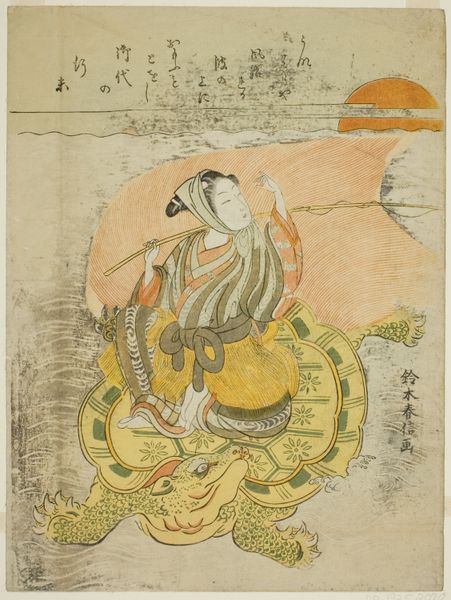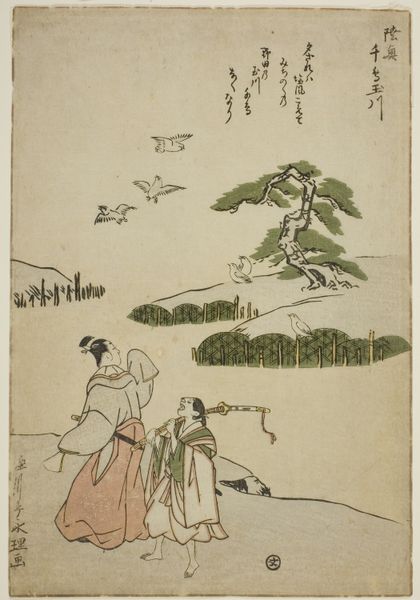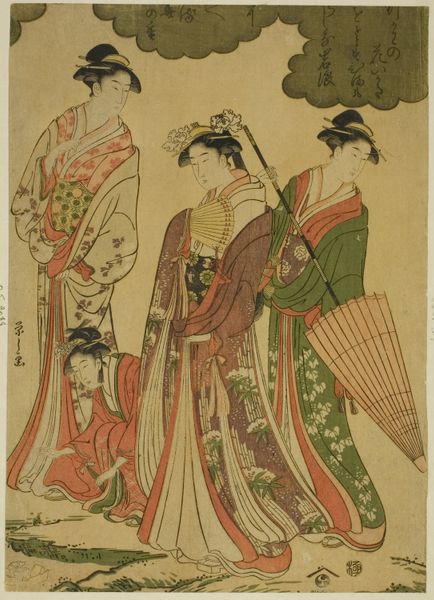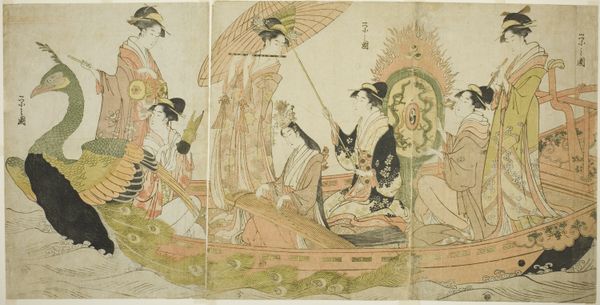
The Jewel River at Ide, from an untitled series of Six Jewel Rivers c. 1767
0:00
0:00
print, woodblock-print
# print
#
asian-art
#
landscape
#
ukiyo-e
#
japan
#
figuration
#
woodblock-print
#
genre-painting
Dimensions: 11 × 8 3/8 in.
Copyright: Public Domain
Editor: This is "The Jewel River at Ide," a woodblock print created around 1767 by Suzuki Harunobu. It's part of a series called "Six Jewel Rivers," currently held at the Art Institute of Chicago. It feels delicate and dreamlike, with these three figures wading through the water. What do you see in this piece? Curator: I see the quiet power of cultural memory being enacted. Consider the "jewel river" itself, evoking purity and preciousness. Rivers often represent the passage of time, of generations. And these women wading...it's an immersion in that historical current. The water almost seems to cleanse and renew, doesn't it? Editor: I hadn't thought of it that way. I was just noticing the water looks a bit chilly! But cleansing… interesting. Why are they called "jewel rivers," do you think? Curator: Well, jewels signify rarity and value, qualities that elevate the ordinary. Naming these rivers as 'jewels' could transform them into sacred sites. Consider the symbolism of water itself, often linked to emotion and intuition. These women are connecting with something ancient and elemental. Are they conveying some implicit message? Editor: Maybe. It's a very serene image. Almost melancholic, though. Curator: Melancholy's a key! Ukiyo-e often captures transient beauty, the ephemeral nature of life. The flowers on the riverbank hint at this. They're beautiful, but fleeting. Are the women regretting the moment when their own beauty fades? Editor: So the artwork reflects not just Japanese culture but perhaps broader human anxieties too, right? Curator: Precisely. The symbolic landscape speaks to a collective human experience, mirroring our own fleeting existence in time. This woodblock print is rich in emotional and symbolic depth! Editor: That's really changed my perspective. I initially saw just a pretty scene, but it's so much more loaded with cultural significance than I thought. Curator: Indeed, images hold worlds within them. Learning to decipher these visual cues unlocks profound insights.
Comments
No comments
Be the first to comment and join the conversation on the ultimate creative platform.
